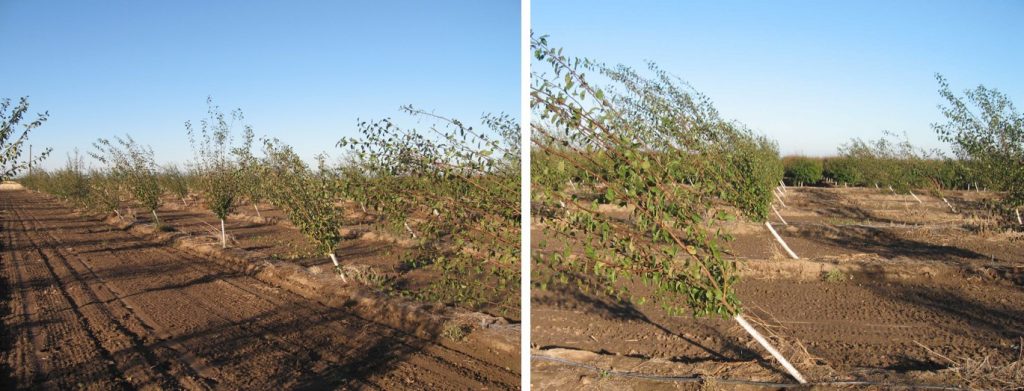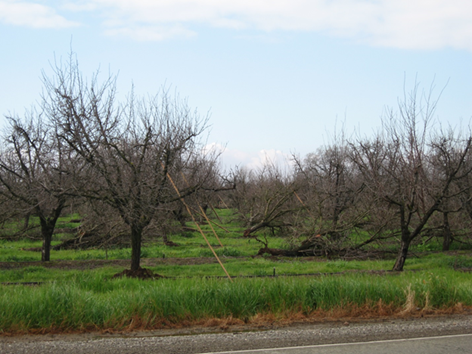Evie Smith, UCCE Staff Research Associate, Southern Sacramento Valley
Franz Niederholzer, UCCE Farm Advisor Colusa, Sutter, and Yuba Counties
Last week, prune orchards in the south Sacramento Valley faced storms with gale-force wind gusts of 50-60 mph. The aftermath of these wind events has further highlighted the importance of selecting prune rootstocks with good anchorage. On a farm call after the storm, farm advisors observed that 10+ foot tall, unpruned second leaf prune trees on Krymsk 86 rootstock remained unmoved and upright. Similar sized second leaf prunes on Marianna 40 (M40) rootstock nearby were leaning after the storm. Similar outcomes have been observed with Marianna rootstocks (M2624, M29C, etc) after strong wind storms in other prune orchards throughout the Sacramento Valley in the past.

Photo 1. Second leaf prune trees on Krymsk 86 rootstocks after 50-60 mph wind gusts in Yolo County in February 2021. The trees remained upright despite the strong winds. Photo Credit: F. Niederholzer

Photos 2 & 3. Second leaf prune trees on Myro 29C rootstocks after strong wind storms in Sutter County in 2010. Photo Credit: F. Niederholzer
These recent examples from the field are consistent with observations from 10 year old prune rootstock trials being conducted in Butte and Yuba Counties, which have indicated significant anchorage differences between different rootstocks. Artificial lean tests conducted at these trial sites have consistently shown that Krymsk 86 rooted prunes are able to withstand applied force (be it wind or mechanical) better than all other rootstocks in the trial.
While sometimes windblown trees can be pushed back up and held upright by stout stakes and rope or bolts, they are damaged goods for the remainder of the life of the orchard. One big hard wind, and they may be over again (see picture below). As weather events like strong winds are forecast to be less predictable and more extreme, it is even more important to consider rootstock anchorage when selecting rootstocks for your orchard. Of course, many other characteristics including pathogen and nematode resistance, tree vigor, and bloom timing also factor into choosing the right rootstock for your orchard. To learn more about how different prune rootstocks compare regarding these characteristics, look at the observations from the Sacramento Valley prune rootstock trial from 2015, 2017 2017, and 2019 as well as the Prune Research Reports Database.



Leave a Reply